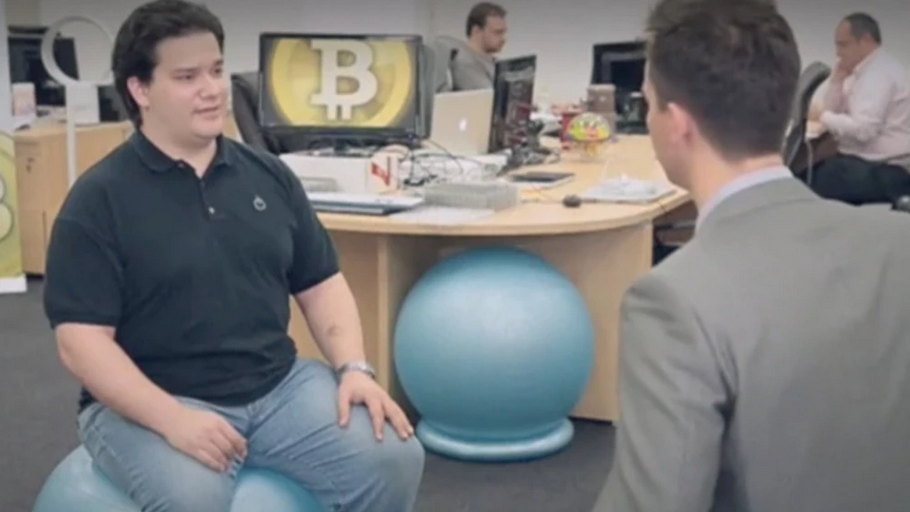In October 2008, someone under the name of Satoshi Nakamoto posted on a cryptography website :
“I’ve been working on an electronic cash system that is fully peer-to-peer, with no trusted 3rd party.”
The message included a link to a white paper in which Nakamoto proposed a peer-to-peer networking, proof-of-work, and public key cryptography protocol.
Satoshi offered the Internet a method of utilizing this technology that had never been attempted before. He had created digital value : he had created Bitcoin.
The rise and rise of Bitcoin
Prior to the invention of Bitcoin, there were no records of Nakamoto’s existence.
He’d just claimed on social forums to be a 34-year-old Japanese man.
Despite the fact that the name Satoshi Nakamoto is Japanese, he communicated online in fluent English, mostly using British idioms.
He also went to considerable measures to conceal his true identity.
Nonetheless, programmers and cryptographers from all around the globe recognized Satoshi’s genius and began working with him to further the Bitcoin project.
The initial exchange rate of Bitcoin was released in October 2009, with a value of 1309 BTC for 1$.
In 2010, Lazlo Hanyecz, a Florida guy, offered 10,000 BTC to anyone who would buy him pizza. Someone accepted, thus making those pizzas from Papa John’s the first ever bitcoin transaction for a tangible good.
The number of trades began to increase in a way that had never been seen before. By November 2010, 4 million bitcoins had been mined, and the value of BTC skyrocketed, demonstrating Bitcoin’s true potential.
Bitcoin was gaining traction, but it needed to be publicly and easily accessible in order to grow.

From Magic cards to Bitcoin
In order for Bitcoin to have value, it had to have users, people who would be interested in making transactions with Bitcoin instead of fiat currencies. And so, the first group of people who actually had an interest were those already using digital currencies. People playing video games such as Second Life, were already trading virtual assets for money and were using real currency to buy in-game money.
In Japan, it all started with Jed McCaleb’s website called Mt. Gox, used for trading cards from the game Magic The Gathering. Magic the Gathering online digital cards could be purchased online with dollars.
Jed, who heard about bitcoin as early as 2009, decided to add bitcoin to the items available on his site. Bitcoin therefore had its first user base. By the summer of 2010, it was one of the only websites to offer this service.
The demand grew so much that Jed was overwhelmed. People were no longer coming to exchange magic cards so much.
Rather, they were coming to exchange fiat currencies for bitcoins. While the website was doing good, the technological challenges were not what Jed was looking for and he didn’t want to run it further.
In 2011, Feb 3rd, Jed sold Mt. Gox to French Mark Karpeles, who at the time was just an acquaintance. Jed went on with his life, and he founded Ripple.
Mark had discovered Bitcoin a few months before and was in love with the concept. Mark is the one who chose the kanji 中本哲史 for Satoshi Nakamoto when he was translating an article for bitcoin.co.jp
There were some strange clauses in the Mt. Gox contract : “the buyer agrees to compensate the seller in the event of a lawsuit”, “the seller does not know whether the site complies with the laws of countries”… But to Mark, it was just a good deal.
However, there were already Bitcoins missing, almost 80,000, worth 62,000$ in April 2011. Jed knew it but he just advised that Mark mined the Bitcoin himself.
Those missing Bitcoins were already worth 800,000$ in June 2011.
Tokyo as the world’s Bitcoin exchange place
Anyway, the price of Bitcoin rose and Mt. Gox grew to be the most popular place to buy and sell Bitcoin on the Internet. 80% of the world’s Bitcoin transactions were done through Mt. Gox.
In May, the offices were moved to the Cerulean Tower in Shibuya. Although Mark had to hire a lot of people, the site could barely complete the current transactions and the security levels were low, if not non-existent.

Mid June, hackers succeeded in a denial of service attack (DoS), making the website completely unavailable.
It took hours for Mark to realize the magnitude of the problem, and a week to fix everything. It turns out that Jed’s admin address was pirated and in the end, another 20,000 Bitcoin got stolen.
Later in 2013, Mt. Gox was doing well : dealing with up to 20 millions dollars a day, expanding to the US, and claiming to be able to handle 100 millions of orders per second.
Teikoku Databank, a well-known and serious rating agency in Japan gave Mt. Gox a D4, the worst possible rating, due to the lack of qualified personnel to manage the accounting.
February 2014, on Mt. Gox public forum someone explained how transaction malleability could hack the system. Mark decided to halt all transactions while he looked for solutions. People got really mad,
especially since this issue was well known within the community. Also just before, Silkroad -the eBay of drugs- was shut down by the FBI, so everyone rushed in to withdraw their Bitcoins.
Finally, on the 15th, he announced that not only 800,00 BTC were missing, but that they had probably been stolen over a period of time. Hackers probably took advantage of the flaw over several months. No one was keeping the accounts up to date, so the theft went undetected.
Any company normally has a security team to track down this kind of issue. But Mark was doing it by himself. He was the CEO, the CTO, the accountant.
Mt. Gox was structured in such a way that the company was the one holding the customers wallets and the private keys to access them, within a central database. It is said that they were not cautious enough to safeguard those keys. Some say they even happen to see paper wallets lie around the office.
It was impossible for users to get their bitcoin back, the world succumbed to panic, Mt. Gox filed for bankruptcy.
One of the most famous scenes in the crypto world happens : in snowy Tokyo, Bitcoin user Kolin Burges flew in from London, he is facing Mark and is holding a sign “Where is our money” ?

Facing the Japanese judiciary system
In March, Mark found a paper wallet with 200,00 Bitcoin. If he could retrieve them so easily, was he the one that hid them in the first place?
He was hated on the Internet, called the Bitcoin Baron, and received dozens of death threats.
While posting apple pie tutorials on Youtube, he was still cooperating with the Japanese police in which he had trust.

He looked, however guilty as charged and was arrested in August 2015. Japanese prosecutors filed the first case against him, accusing him of embezzling $2.7 million.

Once arrested by the Japanese police, it is statistically very difficult to find a way out. The conviction rate in Japan is 99%, the custody can last 23 days with no lawyer, and many end up confessing to crimes they have not committed.
Mark kept claiming his innocence. In fact, he even said he was not so scared: he was confident in the Japanese judiciary system and instead he was curious to discover in prison a new side he had never seen about Japan.
To be retained in custody longer, Karpeles was progressively accused of embezzlement, of using company money for hiring prostitutes… and stayed in jail until July 2016, a little less than a year.
Eventually with the help of investigative journalist Jake Adelstein, Mark handed over to the FBI a copy of Mt. Gox transactions that he had kept safe.
At the time everyone thought bitcoin transactions were anonymous, IRS Agent Tigran Gambaryan managed to prove the opposite. They could identify Alexander Vinnik, a russian criminal, as the hacker. The blockchain is a peer-to-peer, public ledger of transactions. So the FBI could trace down Vinnik who was arrested later while on vacation.
Although Mark Karpeles was once the most hated guy on the Internet, it is more likely that he was just a 27 year old negligent CEO of a multi billion dollar company.
In 2018, he was found not guilty of 2 out of 3 charges, a rare victory in Japan, and he appealed to the 3rd one.
There are still 600,000 bitcoins that have never been found to this day. Mark believes they could be recovered potentially from the wallets that were controlled by Alexander Vinnik.
If you still have your user ID and password, you might log in to the Mt. Gox website (the same as before !) and request a Creditor Code or check your wallet balance. Mark is working on returning the Bitcoins.
He is still not rehabilitated but wants to do right by his former customers.
He is today the CTO for the website shells.com

